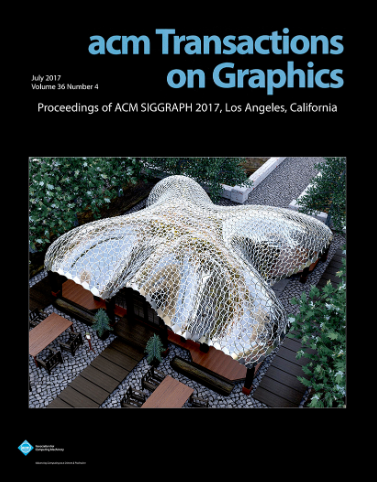Differentiable Owen Scrambling
IF 7.8
1区 计算机科学
Q1 COMPUTER SCIENCE, SOFTWARE ENGINEERING
引用次数: 0
Abstract
Quasi-Monte Carlo integration is at the core of rendering. This technique estimates the value of an integral by evaluating the integrand at well-chosen sample locations. These sample points are designed to cover the domain as uniformly as possible to achieve better convergence rates than purely random points. Deterministic low-discrepancy sequences have been shown to outperform many competitors by guaranteeing good uniformity as measured by the so-called discrepancy metric, and, indirectly, by an integer可微分欧文扰频
准蒙特卡罗积分是渲染的核心。这种技术通过在精心选择的样本位置对积分进行求值来估算积分值。这些采样点的设计目的是尽可能均匀地覆盖整个域,以达到比纯随机点更好的收敛速度。确定性低差异序列已被证明优于许多竞争者,它通过所谓的差异度量保证良好的均匀性,并间接地通过一个整数 t 值(t 值越小越好)来衡量落入每个域分层的点数与分层面积的关系。为了实现随机性,扰频技术会产生多个保留 t 值的实现值,从而使构造具有随机性。其中,欧文扰频是一种流行的方法,它对每个维度的区间进行递归置换。然而,依赖于置换树使其与平滑优化框架不兼容。我们提出了一种正则化排列的可微分欧文扰乱法。我们证明,它可以有效地与自动微分工具一起用于优化低差异序列,以改善最优传输均匀性、积分误差、设计功率谱或投影特性等指标,同时保持欧文扰频所保证的初始 t 值。在某些渲染设置中,我们的优化序列改善了渲染误差。
本文章由计算机程序翻译,如有差异,请以英文原文为准。
求助全文
约1分钟内获得全文
求助全文
来源期刊

ACM Transactions on Graphics
工程技术-计算机:软件工程
CiteScore
14.30
自引率
25.80%
发文量
193
审稿时长
12 months
期刊介绍:
ACM Transactions on Graphics (TOG) is a peer-reviewed scientific journal that aims to disseminate the latest findings of note in the field of computer graphics. It has been published since 1982 by the Association for Computing Machinery. Starting in 2003, all papers accepted for presentation at the annual SIGGRAPH conference are printed in a special summer issue of the journal.
 求助内容:
求助内容: 应助结果提醒方式:
应助结果提醒方式:


